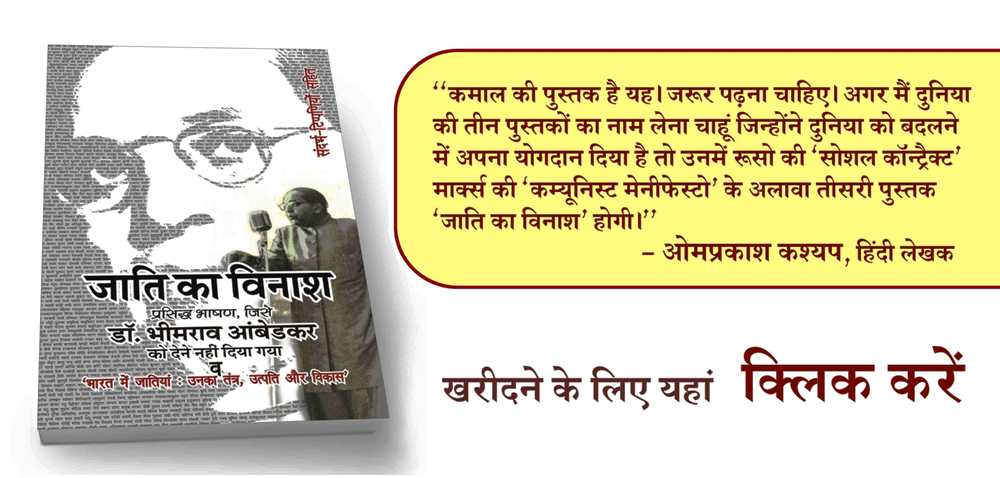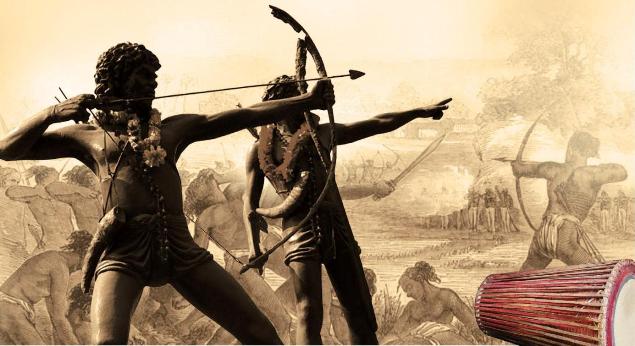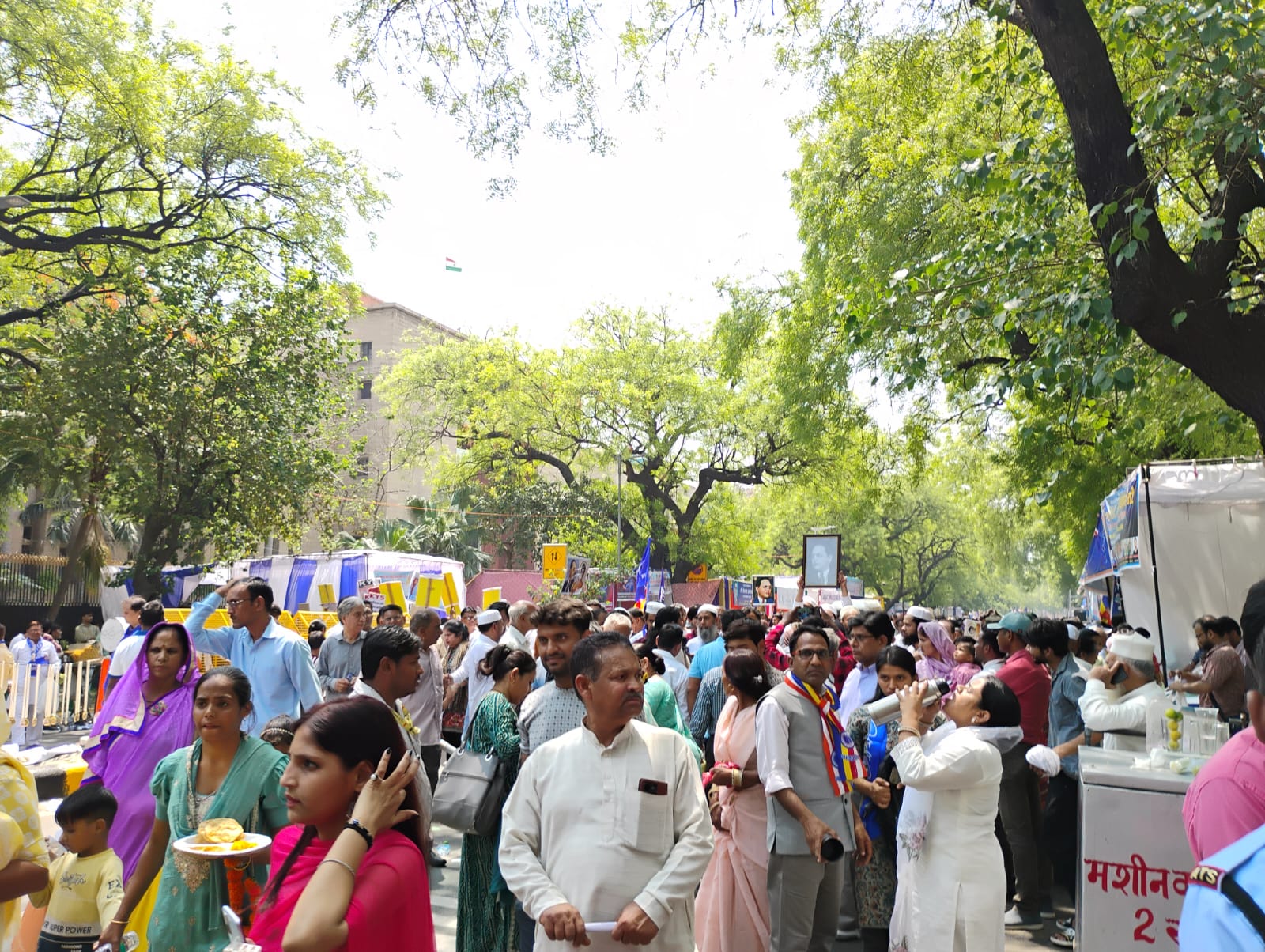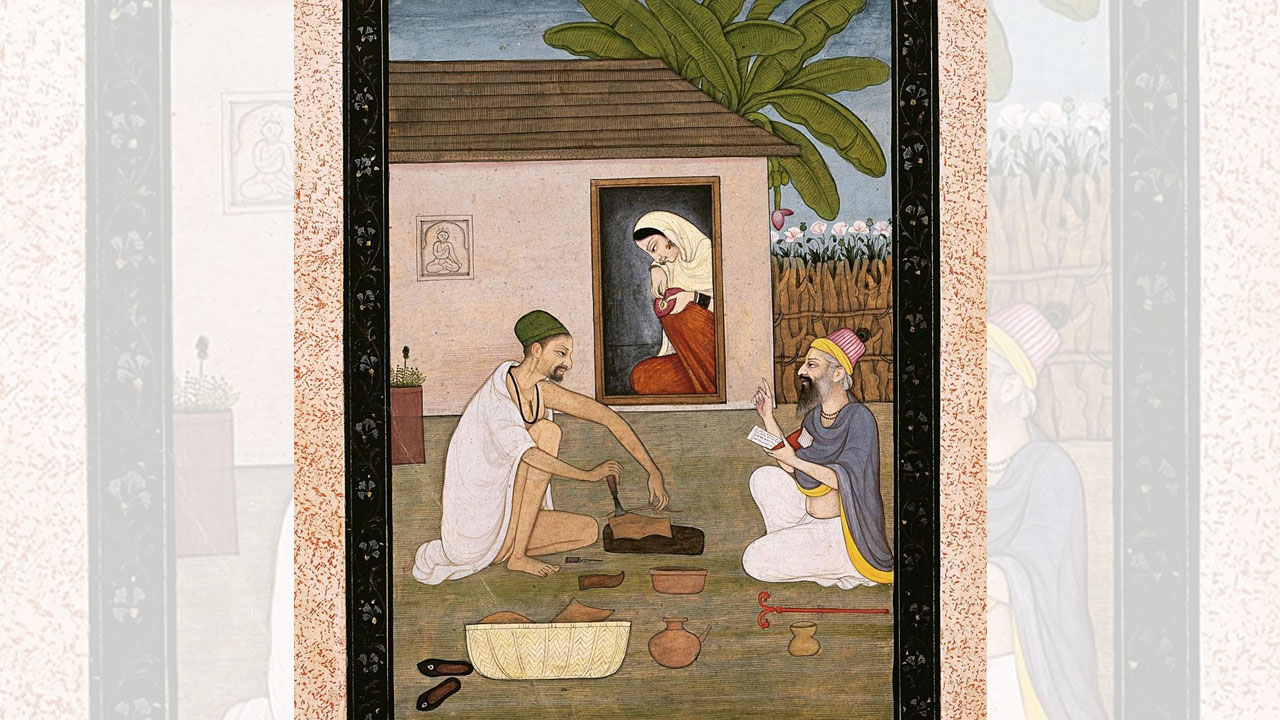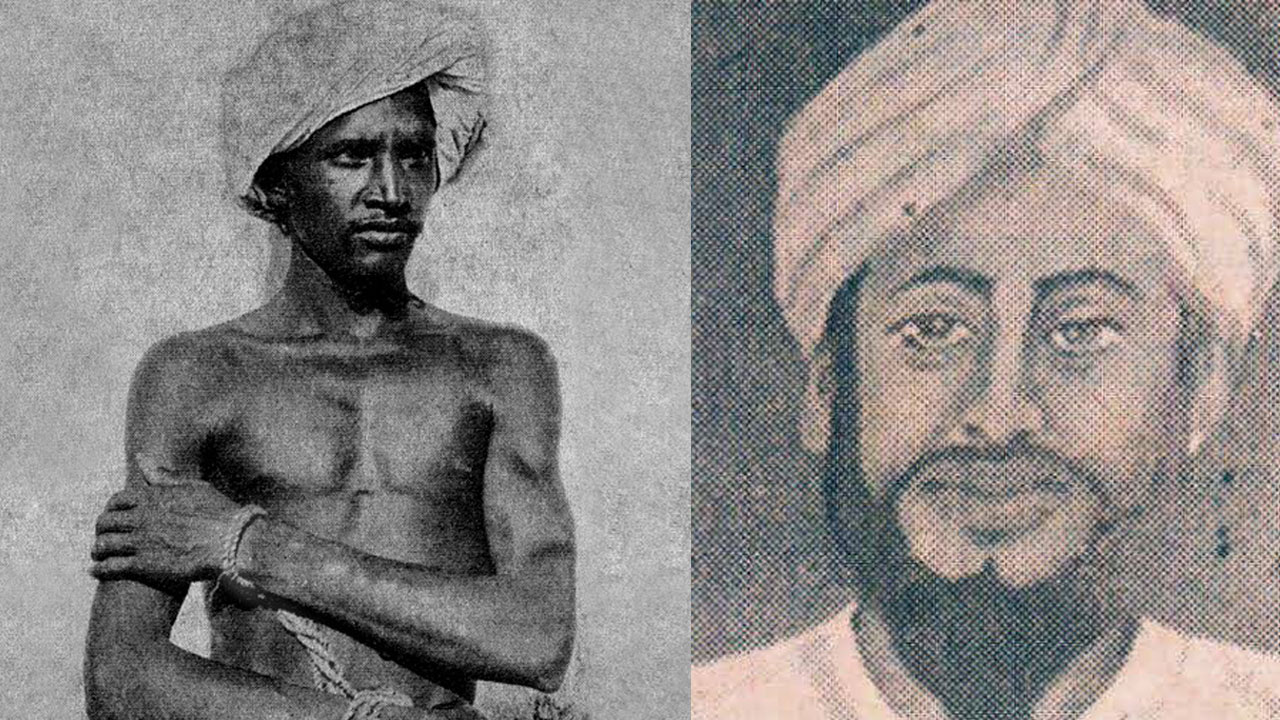Born on 22 August 1923 in Kanpur, Uttar Pradesh, Ramswaroop Verma was drawn to socialist principles from his student days. So, when active politics beckoned, he joined the Socialist Party and became an MLA. He went on to become finance minister in Chaudhary Charan Singh’s Uttar Pradesh government in 1967. He established the Arjak Sangh in 1968 and launched the Bahujan magazine Arjak on 1 June the same year.

It was not the first magazine with the Bahujan theme. Several attempts were made earlier, including Chandrika Prasad Jigyasu’s Kalwar Sandesh. But those attempts were limited and were mostly monthly magazines. Arjak was a weekly.
The weekly created consciousness of and exposed Brahmanism and capitalism, gearing Bahujans for a social and economic transformation – which was the purpose for which Babasaheb had founded the Independent Labour Party.
“Arjak” has the same meaning as the word “labourer” in English – it means one who earns by his labour. Arjak became popular soon. With its clarion call against Brahmanism, it created such a storm with its first edition that it reached even small towns like mine.
Bhim Patrika, a fortnightly published from Jalandhar, was the only publication of the Ambedkar Mission those days. Twenty copies of the magazine would be sent to my town and I used to be one of the regular customers. This magazine had taken Ambedkar’s ideas far and wide in the Hindi belt.

Given this backdrop, the launch of ‘Arjak’ brought a pleasant feeling. ‘Arjak’, in a sense, was the more important of the two magazines because apart from the reports on atrocities against the Dalits, it also carried analyses of political developments. It published a few of my analytical pieces too, one of which was on the atrocities against the “Kanjar” community. Bhim Patrika had a different feel to it, with most of the articles being written by Bali Saheb himself.
In 2014, Bhagwanswarup Katiyar edited and published three volumes of a book on Ramswaroop Verma. One of the volumes is on his personality and thoughts, while the other two volumes contain his works and speeches. These volumes are key to understanding the personality and works of Verma, but, unfortunately, the editing and compilation don’t quite meet academic standards. In spite of being a history of a period of revolution, it does not satisfy the basic conditions of history writing. These volumes tell us about what Verma wrote, but they are silent on when he wrote them. If the compiler had worked a little harder and included the period in which the speech was delivered or the works were written or published, research scholars would not have been disappointed the way they are now. This essay is based on these volumes.
Ramswaroop Verma (22 August 1923 – 19 August 1998) was a product of the social revolutions of the time, started by Chandrika Prasad Jigyasu and his Backward Classes League. This movement was more social and less political. Hence, the core agenda of the Arjak movement was the annihilation of Brahmanism and caste system as well as establishment of an egalitarian society. But Verma failed to offer a political blueprint for translating this idealism into reality. Manusmriti is the main manifesto of Brahmanism. Swami Achhutanand ‘Harihar’ was the first to write:
Day and night, the Manusmriti sets us on fire
It doesn’t allow us to soar, pulls us down
Brahmins and Kshatriyas are made officers
It preaches us to wear the leftovers
This poem was included in Aadi Vansh Ka Danka, an anthology of the poems composed by the Swami. It was published by Jigyasu’s Bahujan Kalyan Prakashan.
Around the same time, Jigyasu also published Premkumar Mani’s Manusmriti: Ek Pratikriya. It was the first book that dwelt on the “black laws” of the Manusmriti and cost Rs 2.50. Verma’s Manusmriti: Rashtra ka Kalank also hit the bookshops during the same period. In the preface of the book, Verma termed Manusmriti anti-Constitution and anti-humanism.
Verma wrote a few more books on social change. Achhuton Ki Samasya Aur Samadhan, Kranti Kyon Aur Kaise, Brahmin Mahima: Kyon Aur Kaise and Manavwad Banam Brahmanwad are some of the important ones.
Verma’s works have yet to be analyzed. Here, I will dwell on his political and economic thoughts.

In terms of his political stance, he was a socialist democrat. In 1968, Verma quit the Socialist Party and launched Samaj Dal on 25 September 1968. A year earlier, on 25 August 1967, Jagdev Prasad had formed the Shoshit Dal in Bihar. The two leaders shared the same ideology, so they merged their parties to form Shoshit Samaj Dal on 7 August 1972. Ram Swarup Verma and Jagdeo Babu became the president and general secretary, respectively.
This is how Verma laid out the principle and mission of the new political outfit:
“It is necessary to boycott both Communism and Capitalism (or dictatorship and nobility) to establish a society.”
“To call the upper-caste system of governance in India a democracy is to ridicule true democracy.”
“The biggest proof of the nobility is the upper-caste leaders and leadership in most of the political parties nationwide. The few low-caste occupants of higher offices in these parties are just have been put there to create an intellectual aura. They continue to be servile to the upper castes. They cannot be self-conscious low-caste members. This is the bitter truth.”
“The Shoshit Samaj Dal pledges to develop leadership from among crores of people of lower castes and to abolish the dominance of the upper castes or classes. The rule of the exploited classes, by the exploited classes, for the exploited classes, is true democracy. The party will not allow its leadership to slip into the hands of the upper castes at any cost.”
The economic agenda of the Shoshit Samaj Dal was as follows:
“The present system swings between two extremes – establishment of massive factories and manually run cottage industries whose workers starve to death. Needless to say, both of them come in the way of the country becoming prosperous. Cottage industries with machines of 0.25HP to 25HP capacity should be set up to increase production and create wealth. This would enable more and more people to get jobs and wouldn’t allow capital to be concentrated in the hands of a few people. At the same time, everyone would earn enough to lead a normal life. Big factories should be set up to produce only those things that cannot be produced by cottage industries. The Shoshit Samaj Dal will strictly adhere to this policy in order to remove poverty, increase the wealth of society and see that the capital flows to the masses instead of getting concentrated in the hands of a few.”
The economic agenda of Ramswaroop Verma talks about annihilation of capitalism and bats for socialism, but lacks practical ideas for implementation. For example, Shoshit Samaj Dal’s manifesto emphasizes nationalizing the entire education system by adopting a public welfare education policy. It says, “Let the entire education system be nationalized. Let it be mandatory for everyone to attend state-owned schools so that everyone gets equal education.”
Perhaps, the Shoshit Samaj Dal issued the manifesto after joining the coalition of Left parties because we don’t find any mention of the nationalization of the education system in Verma’s address to the party’s first national convention (1975). On the contrary, he opposed the claim of the communists that affluence brings with it social superiority. He criticized communism as a dictatorial system.
It is thus clear that, from the beginning, there has been no coordination between the Bahujan ideology and the communist ideology. Lalai Singh Yadav, the Periyar of the Hindi belt, also said, “Social insult hurts more than poverty.”
Opposing the communist ideology, Verma argues: “Muslims cup their hands to drink water at a Brahmin’s house in spite of hundreds of years of rule by the Muslims and the British. In spite of being wealthy and affluent, they are still treated as Untouchables by poor Brahmins. Therefore, the theory of affluence put forward by the communists is wrong and unacceptable. As Brahmins dominate the communist leadership, they presented the hollow theory of affluence to divert the attention of the masses and serve their inherent interests.
“The reality of Indian society is that the lower you are in the caste hierarchy the poorer you are. The bhangis are on the bottommost rung, so they are the poorest in the country. Prosperity will continue to elude the masses like a mirage as long as the social inequality is not erased. The Indian communist parties refuse to accept this reality. This is why they have failed to make their presence felt among the masses in spite of being around for so long.”
The anti-communist view of Bahujan thinkers wasn’t casual. Rather, it was creative. In his address to the Shoshit Samaj Dal convention in 1975, Verma shed light on this creativity. He said, “By supporting the capitalist syndicate, Congress party, the Indian communists have proved that despite their theoretical differences, they are two sides of the same coin because both have brahmanical leadership.”
No doubt, the communist leadership is brahmanical and has strengthened capitalism, which it opposes, by supporting the Congress from the very beginning. Verma concludes that the communist leadership has supported the economic exploitation of the Dalit classes to keep them at the lowest social level because it is brahmanical at its core. It is a fact that the lower you are in the caste hierarchy, the poorer you are but it is also true that the only way to narrow the poor-rich gap is the nationalization of the human resources – the path to socialism. Communism or socialism is the path of salvation for the proletariat, but ironically, the Brahmin leadership has no wish to take the party to the proletariat.
Verma has no hatred for the socialists. Rather, he was disappointed with the political parties of his time that had a brahmanical leadership and no interest in socialism. This is what he says in his aforementioned speech: “Nowhere in the world has the struggle for economic and political equality been waged without social equality. The brahmanical leadership of these parties is trying, unsuccessfully, to deny this historical truth. Thus it won’t be unnatural to conclude that the battle for social justice cannot be fought under brahmanical leadership. Expecting socialism under this kind of leadership will be as misguided as expecting horns on a donkey’s head.”
How to achieve this equality? The Verma doctrine has the lone solution – annihilation of Brahminism. But can non-Brahmin leadership demolish Brahmanism? Verma wanted to encourage humanism, socialism and non-Brahmin leadership. Brahmanism, however, is not a wall made of clay that can be demolished to make way for humanism. It is a mindset, a sense of high and low and, as Dr Ambedkar has said, is not confined to the Brahmins; anyone can have it, even the Dalits. So, it is impractical to expect a non-Brahmin leadership to abolish Brahmanism.
Verma had an ambitious plan for economic development of Untouchables, Tribals and the backward classes: He called it “Insani Basti Basao” (Make a Human Settlement). Addressing the ninth annual convention of the Shoshit Samaj Dal, he said:
“According to the Shoshit Samaj Dal, there are about 12 crore acres of vacant land in forest areas where the government cannot plant trees for the next five years. The government can easily build human settlements in these areas. The government should settle a hundred families in each village and every village should have metalled roads, tube-wells and electricity connections. Every family should be given a room (15ft by 10ft), a bathroom, a kitchen and a toilet. Each family may also be allotted a land of 2 acres for five years for planting trees and allowed to till the land and feed themselves till the afforestation exercise is complete. The government may also train the adults of every family to engage in production activities, supply them tools and raw materials at a fixed price and buy the finished product from them at a price that would help bring them sustenance. Then the government may resettle those among them who are ready to do so.”
Verma has laid out this plan in his book, Achhuton Ki Samasya Aur Samadhan.
Translation: Pramode Mallik; copy-editing: Anil
Forward Press also publishes books on Bahujan issues. Forward Press Books sheds light on the widespread problems as well as the finer aspects of Bahujan (Dalit, OBC, Adivasi, Nomadic, Pasmanda) society, culture, literature and politics. Contact us for a list of FP Books’ titles and to order. Mobile: +917827427311, Email: info@forwardmagazine.in)
The titles from Forward Press Books are also available on Kindle and these e-books cost less than their print versions. Browse and buy:
The Case for Bahujan Literature
Dalit Panthers: An Authoritative History

